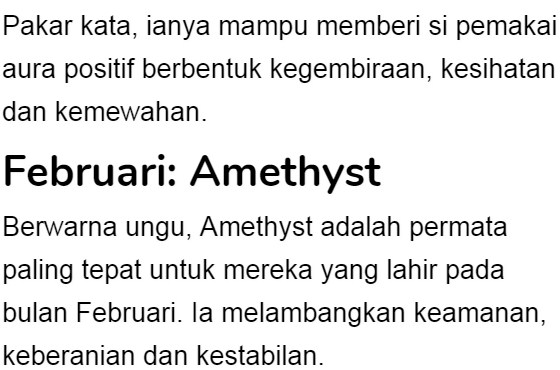Three Ways To Finance Your College Education
You are your own most valuable asset, and your education is the greatest investment you will ever make. But how will you pay for it? Based on statistics provided by the U.S. Department of Education, the average total cost of college attendance is about $15,014 per year for four-year public schools and $32,790 per year for private not-for-profit colleges. With the total cost of a four-year education ranging between $60,000 and $131,000, and with tuitions only expected to rise, planning for these expenses is more important than ever. As with any long-term savings plan, the best strategy is to start early and save often. Parents and students should consider all of the options available as part of the planning process. First on the list should be college savings or prepaid tuition plans, often referred to as Section 529 plans. If these savings aren't enough by the time the first college bill comes due, students should consider applying for various grants and scholarships. Taking out student loans should be the last option if there is still a shortfall. While it is ideal for the costs of college to be covered entirely by savings, and not financed by debt, families may find that the best plan for them is a combination of these methods. Section 529 Plans There are two types of Section 529 plans: prepaid tuition plans and college savings plans. In general, prepaid tuition plans enable parents to pay for future tuition costs at today's rates. When selecting a plan, however, parents should be aware that "today's rates" include an implied increase in college tuition expenses, resulting in payments that are higher than the current tuition costs in any given year. The advantage of this type of plan is that parents are guaranteed that a child's tuition expenses will be fully covered. And if their child decides not to attend college, parents can get a refund of their plan contributions. Prepaid tuition plans do have some drawbacks. Since they are "safer" investments, assets in the accounts are not expected to grow at the same rate they would if they were invested in a diversified portfolio. Also, if the sponsoring state of the prepaid plan can no longer afford to pay the promised tuition costs, parents may find themselves stuck with the bill after all. As an alternative, parents may want to strongly consider Section 529 college savings plans, which add a degree of flexibility and control. College savings plans allow individuals to contribute to an investment account, in which assets grow tax-free, for the purpose of paying the beneficiary's college expenses. When the beneficiary attends college, he or she can use the account to pay for tuition and fees, books, supplies, and room and board. Unlike prepaid plans, parents retain full control over the assets in the accounts, enabling them to select the right investment options for their financial goals. The accounts are also more flexible than prepaid plans, in that the account's beneficiary can easily be changed as long as the new beneficiary is a family member. This makes the accounts ideal for parents with multiple children. In many states, taxpayers may also receive a state tax deduction for contributions made to the account. When choosing a college savings plan, individuals should consider the associated expenses and the investment options available, and determine whether the plan fits their financial goals. Since the expenses are deducted from investment returns, it is important to minimize these costs. The plan should also offer flexible mutual fund investment options that will enable the account owner to broadly diversify across asset classes and geographic regions. The College Savings Plan Network website allows parents and plan sponsors to compare and contrast various college savings plans. Scholarships and Grants In cases where a Section 529 prepaid or college savings plan does not cover the full cost of a child's education expenses, or when a family's financial situation does not permit establishing these types of accounts, students may apply for federal grants and scholarships. The government offers a variety of aid for eligible students who fit certain criteria. The criteria can be based on a student's financial need, selected major, ethnicity or gender, among other factors. The most popular grant is the federal Pell Grant, which offers students a maximum of $5,500 per year based on financial need. Hundreds of private organizations and institutions offer scholarships. Students and their families can also search for local companies, schools or other organizations that offer scholarships. Students should generally use grants and scholarships to supplement existing financial plans for their secondary educations, as it is rare that these will cover significant portions of their expenses. Student Loans Student loans are the most widely used resource to fund higher educations. In 2011, outstanding student loans reached $1 trillion in the United States, and students borrowed $117 billion from the federal government during the year. Currently, the government offers three types of loans to individuals pursuing higher educations: Federal Perkins Loans, Direct Stafford Loans and Direct PLUS Loans. The Federal Perkins Loan is offered to undergraduate and graduate students based on their financial need. Students can receive $100 to $4,000 per year, and the loans have an annual interest rate of 5 percent, which begins to accumulate nine months after the students graduate. Direct Stafford Loans can be subsidized or unsubsidized. Eligibility for the subsidized Stafford Loan is based on financial need, which is not required for the unsubsidized version. Subsidized Stafford Loans charge undergraduates an annual interest rate of 3.4 percent, starting six months after graduation. Graduate students are permitted the same six-month grace period, but pay a 6.8 percent annual interest rate. Interest on the unsubsidized loans starts to accrue after the loan is first paid out, at a rate of 6.8 percent. The maximum amount dependent students can receive for Stafford Loans over four years is $31,000, with no more than $23,000 from the subsidized loans. There has been some controversy involving the subsidized version of Direct Stafford Loans. As this issue went to press the lower interest rate of 3.4 percent was set to expire and revert to 6.8 percent on July 1 of this year, meaning that students receiving subsidized Stafford Loans will have additional interest to pay after they graduate. While Congress may extend the lower rate, parents and students should conservatively assume that they will pay the higher one starting this fall. Parents or graduate students can apply for a federal Direct PLUS Loan. These loans have an annual interest rate of 7.8 percent, which starts to accrue as of the first distribution. Graduate students and parents can expect to receive support from these loans equal to the cost of tuition, less any financial aid already provided. For students who do not qualify for federal loans, private lenders provide an assortment of options. Private loans are becoming increasingly popular as a result of growing demand for secondary education over the last decade. Private loan interest rates are usually quoted as LIBOR (a benchmark short-term interest rate) plus a percentage. The best have interest rates of LIBOR plus 2 percent, and will usually require a creditworthy cosigner. Other loans can charge rates upward of LIBOR plus 9 percent. In general, the terms for private loans will not be available to review until after students submit their applications. The total amount of the loans and their rates can vary highly between applicants, depending on their financial situations. Loan applicants should also be aware of the fees banks charge for the loans, which can dramatically increase the total costs. As a rule of thumb, students should exhaust all of their federal loan options before applying for a private loan. From a financial planning perspective, taking on significant debt to finance a college education is not always wise. It's important to assess the future earnings potential students expect the education to provide. When considering schools with above-average costs, students should think about what income they expect to earn after graduation, based on their majors and career plans, as well as the quality of their degrees. Students should consider whether that income will be sufficient to satisfy the payments on the loan without overly hindering other financial goals, such as buying a house or car, or starting a family. There is no one-size-fits-all solution, so parents and students should carefully consider the options to pay for college. Section 529 college savings plans are often the best, but not all families have the ability to save enough to fully cover the growing costs of college. As with any financial goal, however, the longer your time for saving, the more successful you will be in meeting it.





























